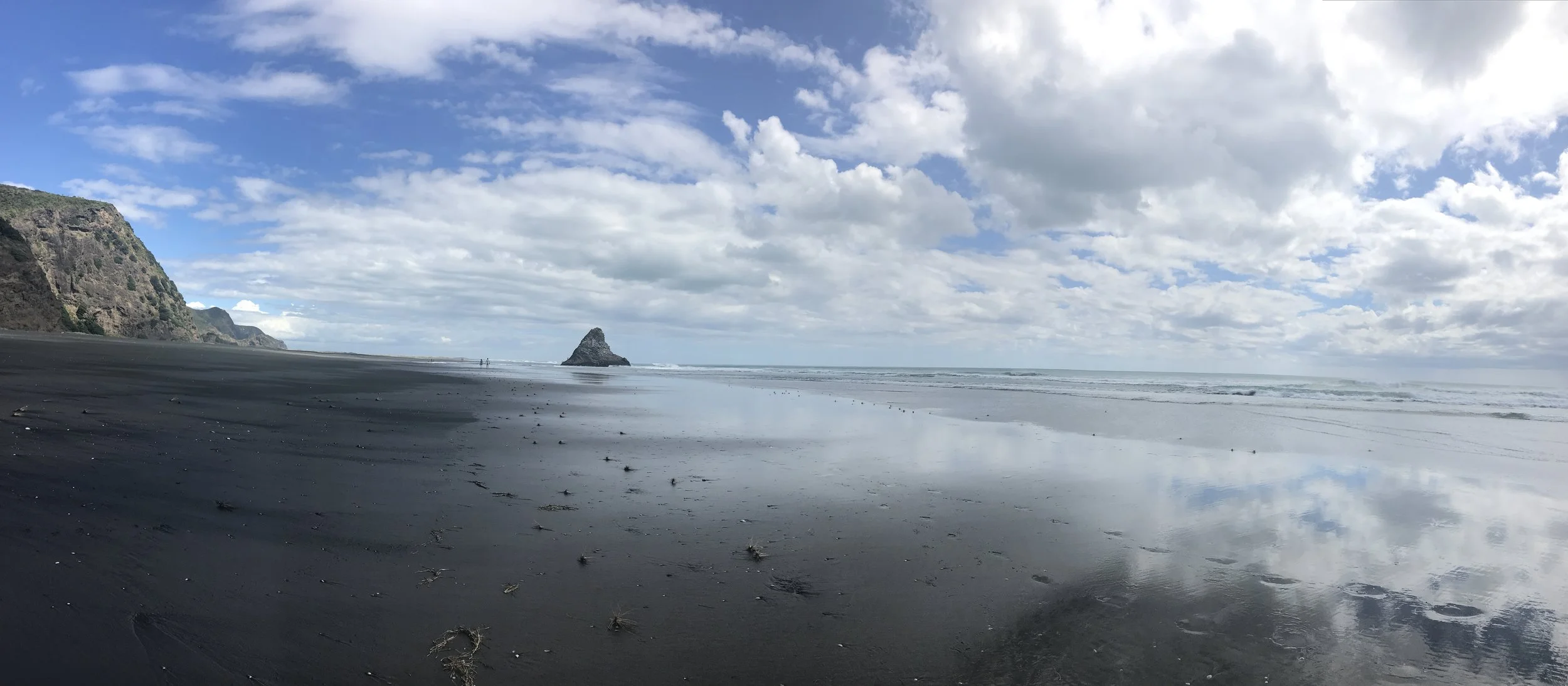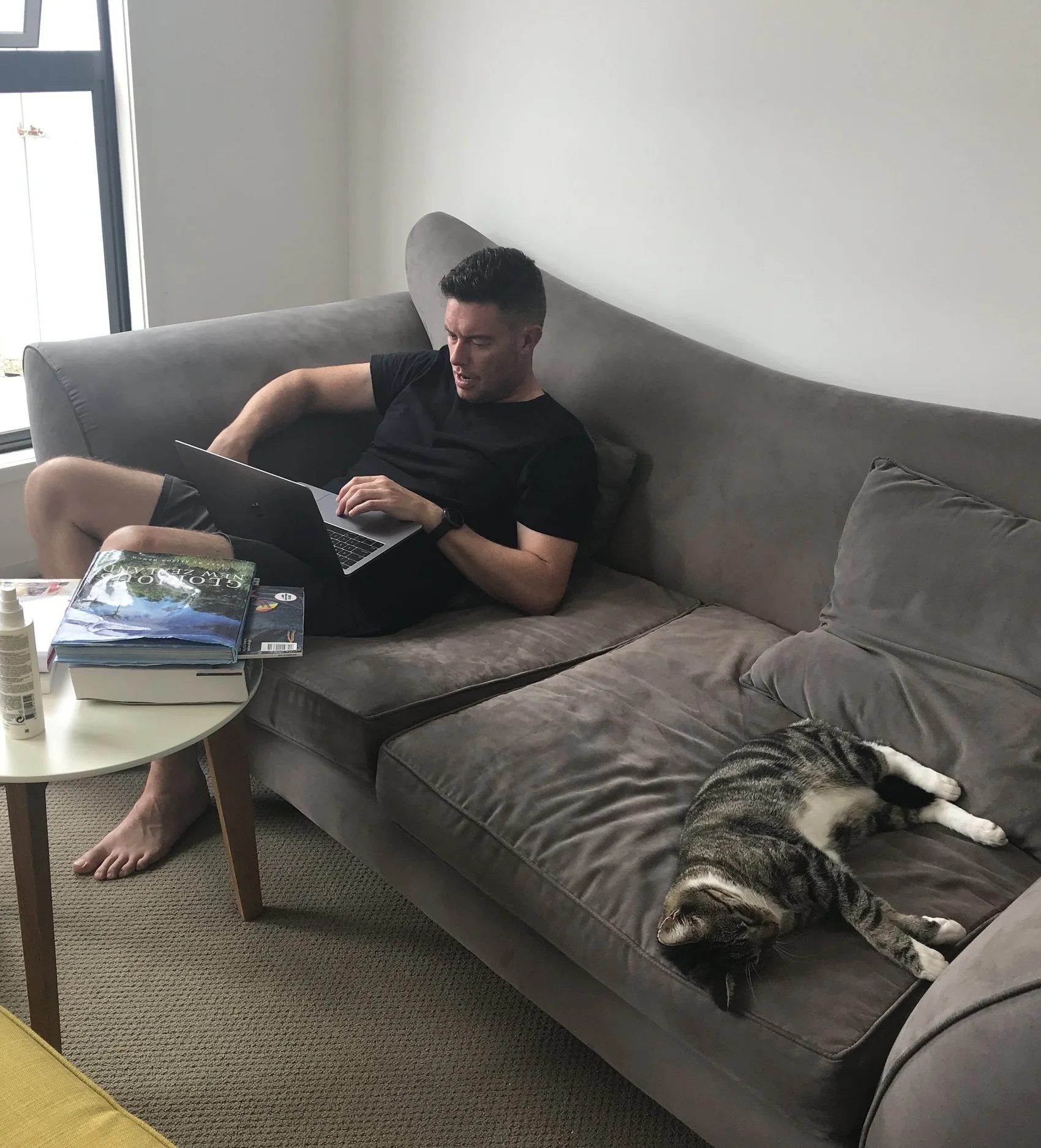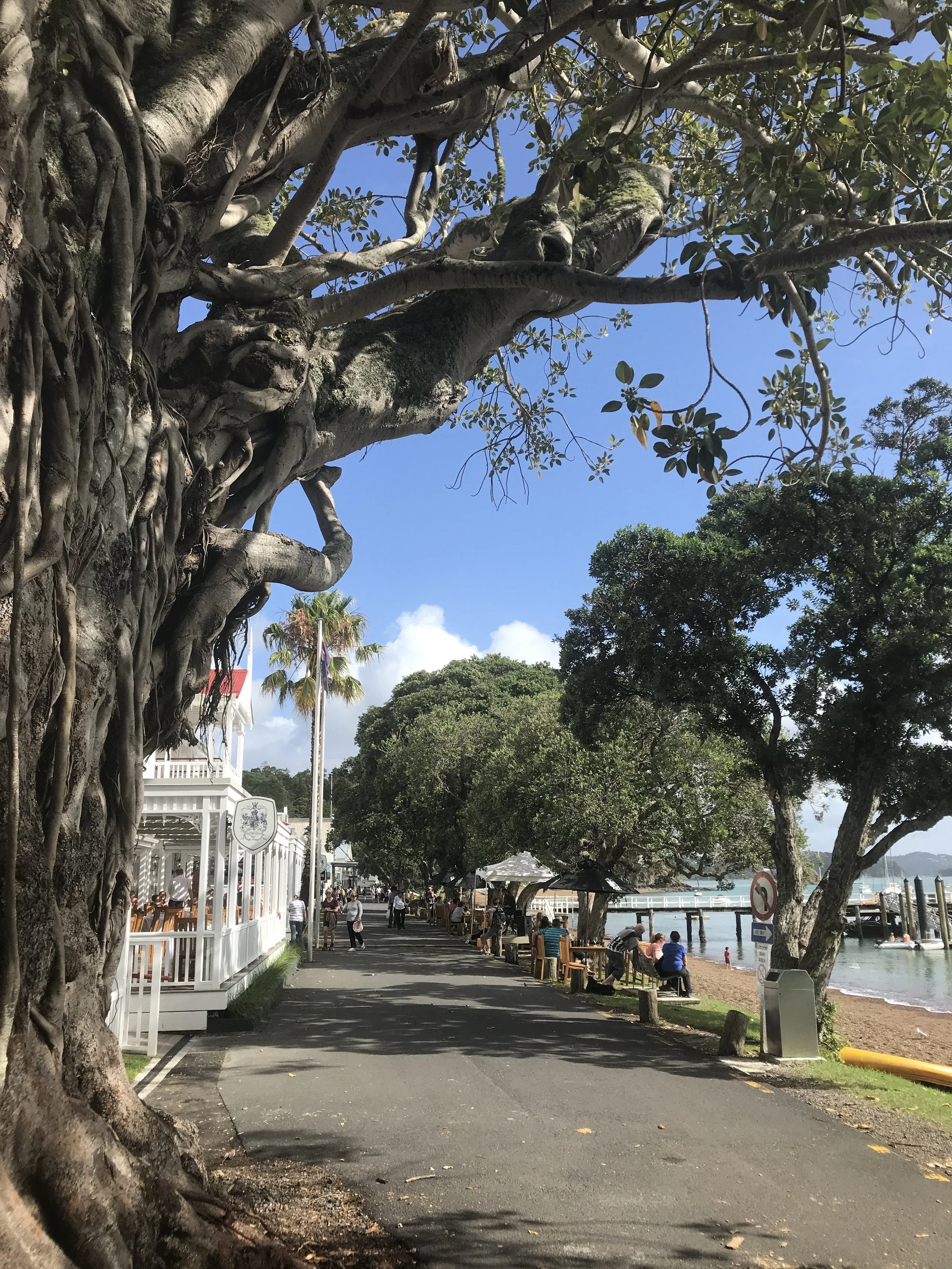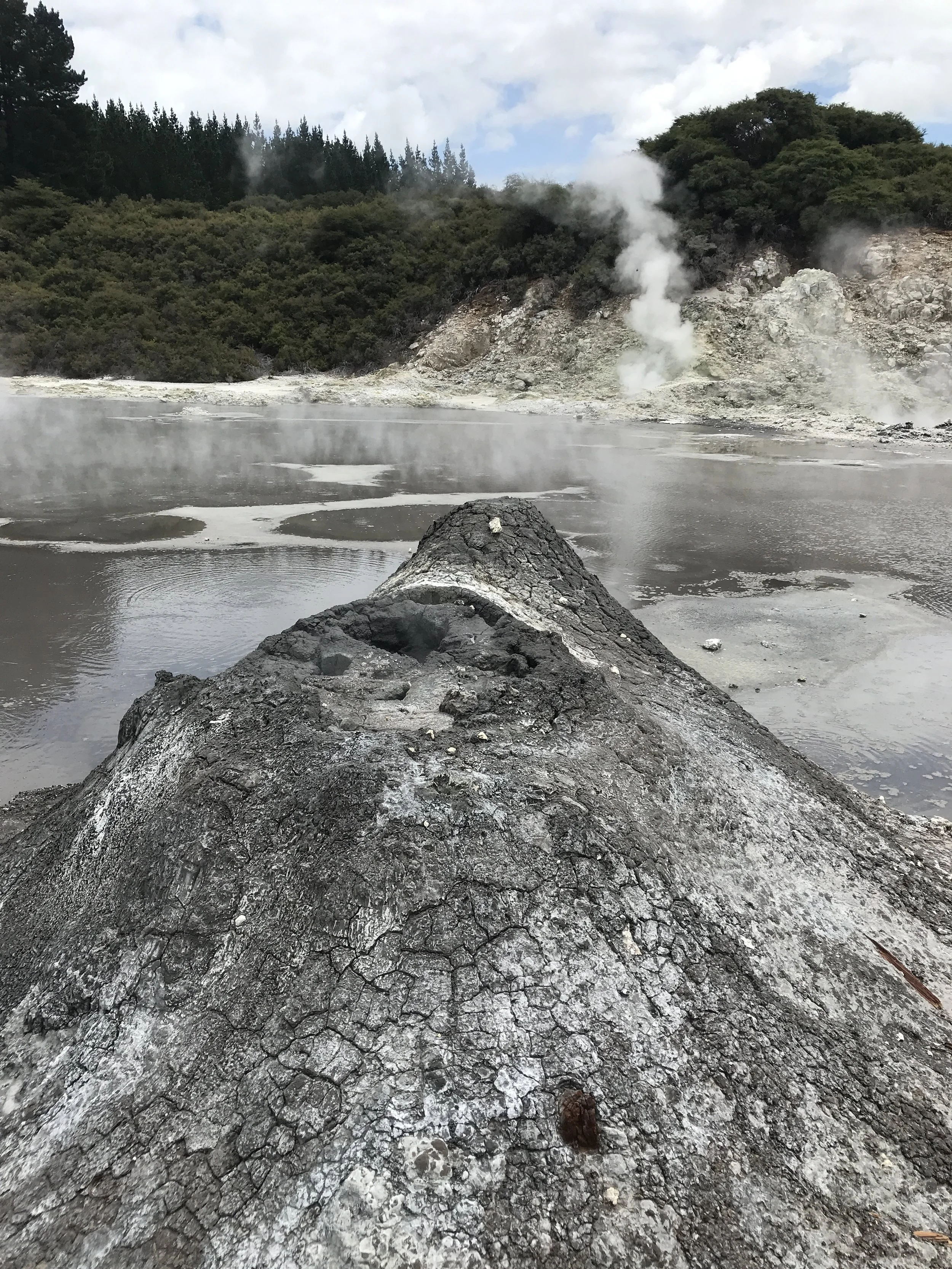How to kayak to a volcano at night
How to kayak to a volcano at night.
Step 1: Get a former white-water kayaking Kiwi to be your back rower, (aka. one known as Brent)
Step 2. Learn how to put on a splash skirt with style and smile for the cameras (the second task being a lot easier than the first)
Step 3. Go to Auckland - the capital city with the most beaches and the only one with a volcano island (Rangitoto) accessible from the shore
Sunset view from the top of Rangitoto
We were lucky to have a beautiful day and relatively calm waters, which allowed us to kayak the 7 kilometers from the St. Heliers beach in Auckland, where we were staying, to the Rangitoto Island. We were three kayaks - Brent and I, another couple from Australia and the guides - an Irishman and a Norwegian who alternate guiding kayaking tours between New Zealand and Norway, depending on the season.
We started rowing around 5pm after a short orientation to kayaking technique and equipment. It took us about an hour to paddle to Rangitoto Island, which, as we discovered, is now one of the many growing pest-free islands in New Zealand. For those of you unfamiliar with the concept of “pest free”, here’s a quick primer. The islands of New Zealand had never had any mammals (with the exception of one rare species), making them a bird paradise before the arrival of man. The Maori came first, bringing with them some new species from the rest of Polynesia and eating the Moa to extinction. Then the European settlers with their short-sighted ideas of creating a farming and hunting paradise really upset the balance of the ecosystem. They introduced rabbits, possums, stoats, mice, rats, deer and other mammals which today are considered “pests” in New Zealand since they’ve come to destroy large swaths of the islands’ native flora and fauna.
In the past decade New Zealand has invested a lot of money and manpower into exterminating these “pests” so that the native birds and plants would recover. They’ve stared with the smaller islands, such as Rangitoto, which due to their smaller size, are easier to control. Ever since we hiked the Routeburn in November and on many of our subsequent treks in New Zealand, we’ve seen the trap boxes with poison for these small mammals. Here is an article for more background on this unique effort by the New Zealand government.
Anyway, Rangitoto Island was officially declared “pest free” a few years ago, but there are still plenty of traps with poison along walkways and those are monitored periodically, should the random “pest” find its way onto the island. All visitors on the island are asked to check their body and equipment to make sure they are not harboring said “pests”. Hmm, I wander how many people keep a pet rabbit or a rat in their backpacks?
Rangitoto is one of the volcanoes which comprise Auckland’s chain of volcanos (leave it to the British to pick a volcanic hotbed as the site of the country’s new capital!). It is also very sparsely populated these days - there are only a few baches left. “Bach” is a New Zealand term for a small bare-bones hut usually by the beach, where people can spend their Summer Holidays. Most of the visitors these days are day visitors, like us, coming to enjoy the sights of Auckland from the volcano island. For more information on Rangitoto, see the DOC info page.
As we walked up the path to Rangitoto’s summit and past the forested crater, the scenery reminded me of the volcanic rocks on the Big Island of Hawaii - big slabs of sharp black rock strewn haphazardly all over the landscape with green trees and shrubbery starting to sprout on top. The view from the summit towards Auckland was the best part of the hike - we could see the golden glow of sunset cover a spectacular panorama of Auckland and the neighboring beaches and coastline.
The treat was going back to our kayaks after sunset and putting the boats in the water with our night-lights on, in a scene not unlike the movie shot of wizarding students setting their boats across the lake towards Hogwarts. For the next hour, we paddled in the darkness, watching the Southern Cross and other constellations appear on a crystal clear sky above New Zealand’s capital. That night canoeing back to St Heliers was definitely a highlight of our Auckland stay.
On our way back to Auckland












